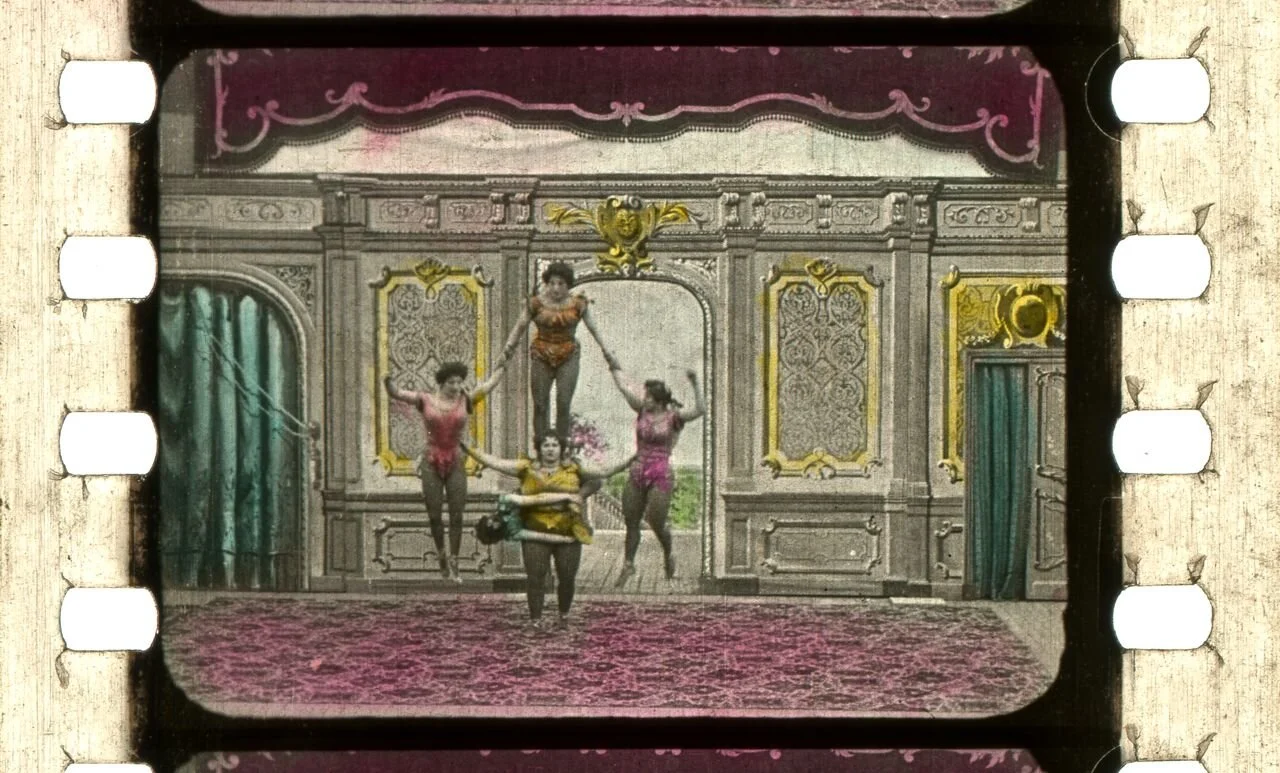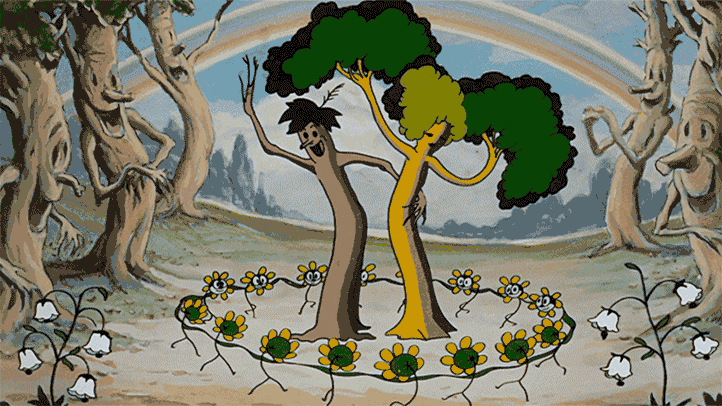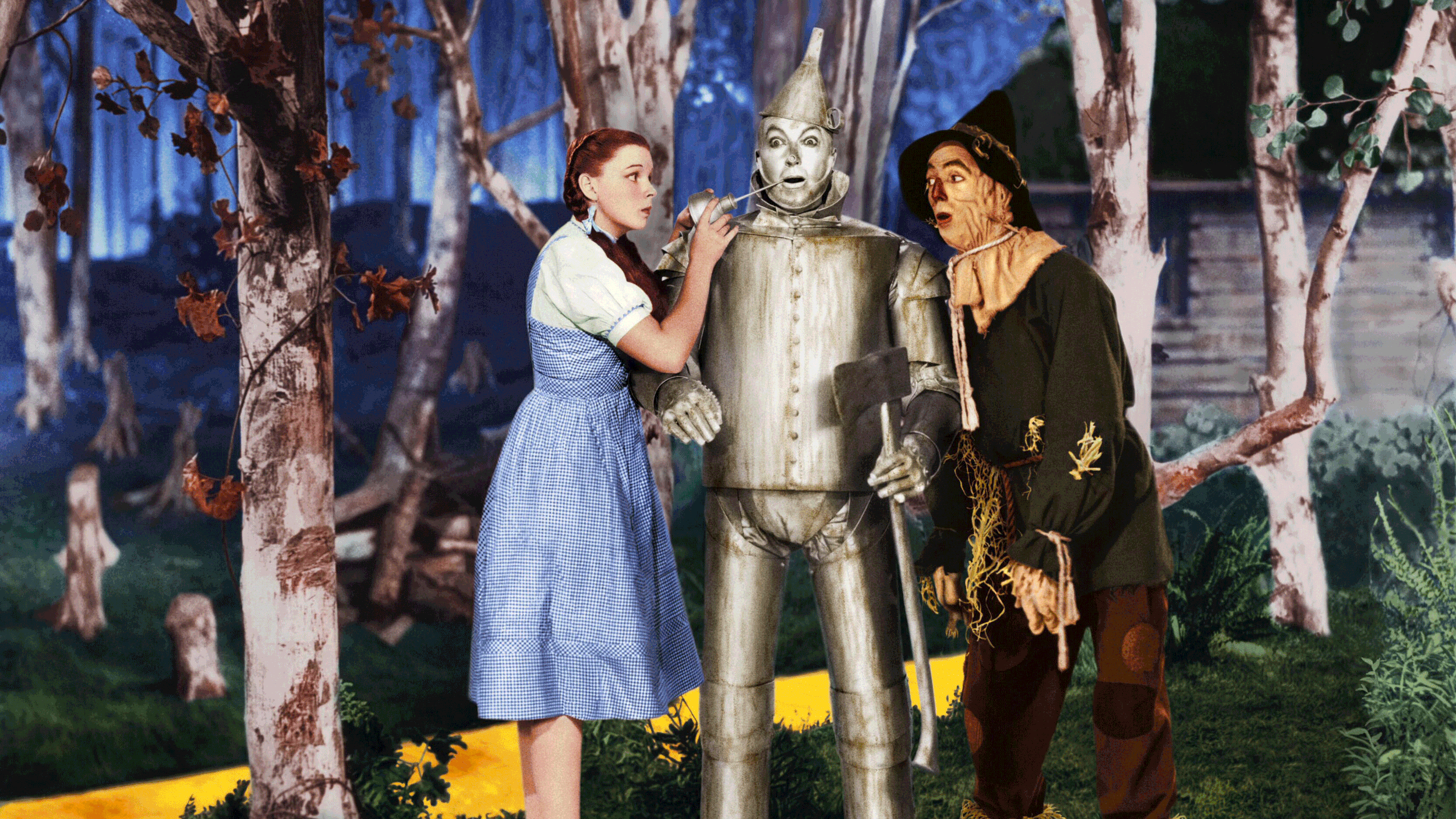The Evolution of Color in Film
Written by Taraneh Niakan
Cinema was born in black-and-white, and this forced early filmmakers to develop a mastership of light and dark. With decades of development, filmmakers now have more and more technology to bring their vision to life. Today, the power of color remains strong as ever, and modern filmmakers have the flexibility of digital cameras and color-grading programs.
Les Six sœurs Dainef. Pathé Frères, 1902.
From the silent films of the 1890s, our first filmmakers began experimenting with tinting and toning to move our visual experience closer to reality. These attempts were far from today’s standards though nonetheless necessary steps in the development of Kinemacolor (1908-1915) and Technicolor. Technicolor produced their first color film, The Gulf Inbetween (1917), with their two-color method. The introduction of sound in 1927 posed problems, but by 1932, Technicolor perfected its three-color process that didn’t affect sound recording. Technicolor offered vibrant colors in a durable process unprecedented from anything before.
Flowers and Trees. Directed by Burt Gillett. Walt Disney Productions, 1932.
The Wizard of Oz. Directed by Victor Fleming. Metro-Goldwyn-Mayer, 1939.
The founder and president of Technicolor was Herbert T. Kalmus (1881-1963). His wife, Natalie Kalmus (1878-1965), saw the entrepreneurial potential of Technicolor and began selling it to Hollywood and Europe. She oversaw the entire coloring process, becoming the head director for Technicolor and referring to herself as “ringmaster of the rainbow.” She supervised vital operations that related to color, including lighting, camera, set design, costumes, and post-production. Her hearty list of credits on IMDB includes close to 400 films. She was the head color director on the most well-known color films, such as Wizard of Oz (1939), Gone with the Wind (1939), and Disney’s first colorized cartoon, Flowers and Trees (1932).
Dario Argento’s Suspiria, 1977. Photo: courtesy Criterion Pictures USA, Inc.
Though Technicolor was gaining popularity, it was expensive- too expensive to last. In 1950, Eastman Kodak marketed Eastmancolor, his more affordable three-color system. Technicolor still made a legacy, though, with era-defining films such as The Godfather (1973) and Susperia (1977). By the 1990s, filmmakers began to switch to digital. Film reels were expensive, and advancements in digital camera afforded more takes with less money. Digital video became a style in itself, and eventually, cameras were out-competing each other with pixels, higher definition, and ranges of color. Digital color-grading created new tones with vibrant colors that stimulated audiences like never before. The Matrix (1999), shot on film, was digitized through Digital Intermediate finishing- the acclaimed cyberpunk world owing itself to the murky-green tones.
Midsommar. Directed by Ari Aster. A24, 2019.
Now, color-grading is a specified field, with coveted softwares that offer different abilities, an industry favorite being DaVinci Resolve. For blockbusters and independent films alike, color-grading has become an indispensable part of the budget. Ari Aster, director of the vibrantly-colored horror film, Midsommar (2019), spoke about how the movie’s LUT (color template) mimics the nostalgic Technicolor-feel.
The Love Witch. Directed by Anna Biller. Oscilloscope, 2016. image Courtesy of Anna BIllier Producitons.
Many modern filmmakers try to emulate the legacy that Technicolor left behind. Anna Biller’s The Love Witch (2016) was shot on 35mm film and pays homage to the Technicolor-era more than one way. With close to endless possibilities, making a movie in film versus digital, or black-and-white versus color, is a bold stylistic move, done by choice and not by necessity. Examples of black-and-white color schemes used as a stylistic advantage include A24’s The Lighthouse (2019), an eery time-piece, and the Iranian-vampire-western, Girl that Walks Home at Night (2014).
The creative discretion on HOW to shoot a movie has become a passionate undertaking to directors, cinematographers, and editors alike. Filmmakers continue to push the boundaries of what color can do for a movie’s tone. The innovation of this medium throughout history has afforded today’s filmmakers with more options than ever to captivate audiences, getting only more and more spectacular.













